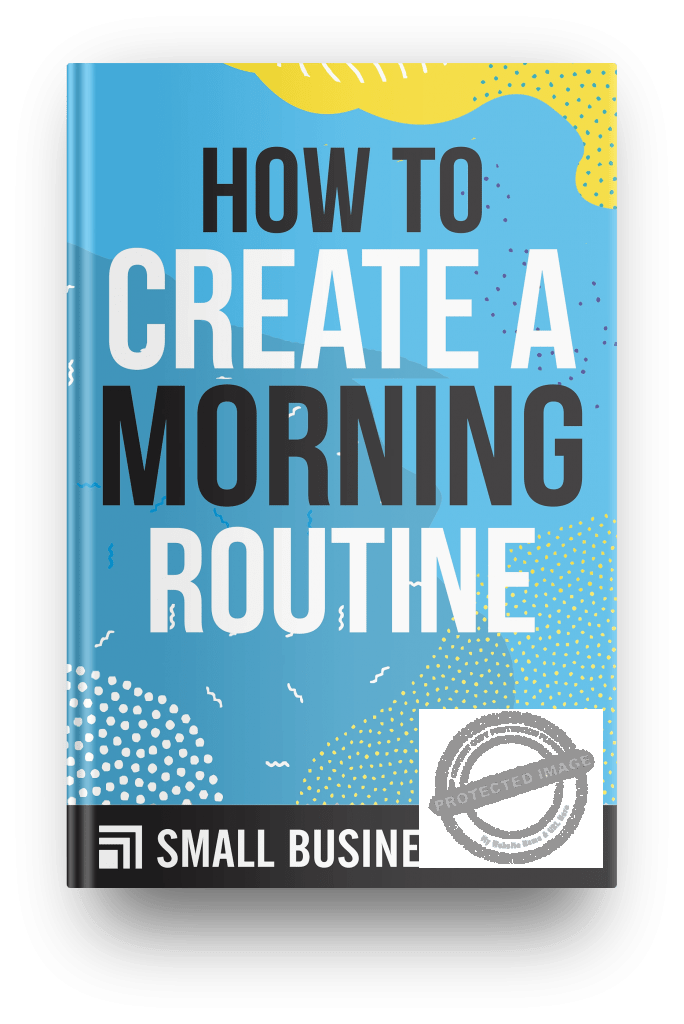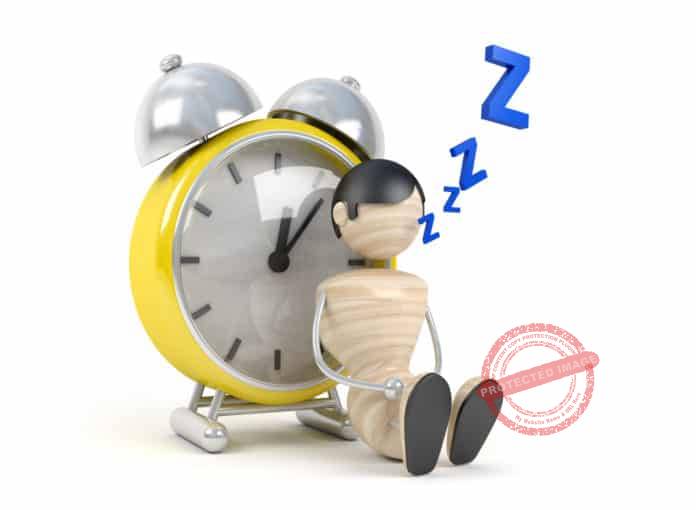Do you have a routine you follow daily? Most successful people in their own respective fields have a daily or morning routine or ritual. So if you want to learn how to create a morning routine, read on!
There are two crucial elements in a morning routine which when created that contribute to their successes.
First is the routine itself.
Second is getting a good night’s sleep and waking early to perform the routine, which is particularly the more important aspect of a morning routine.
Scientists have covered greatly the benefits of waking up early.
Below are some of them.
They discovered that you tend to…
- Get more daytime, which equates to more hours that can be used for work.
- Work faster and have more energy, which means working quickly on tasks.
- Have better mental clarity that will help you make sound decisions.
- Receive and accumulate less stress.
- Are not forced to rush things since you have more time before you work.
- Get better sleep because your schedule will force you to correct your sleep timetable.
According to researchers, people who wake early possess these traits. These people are:
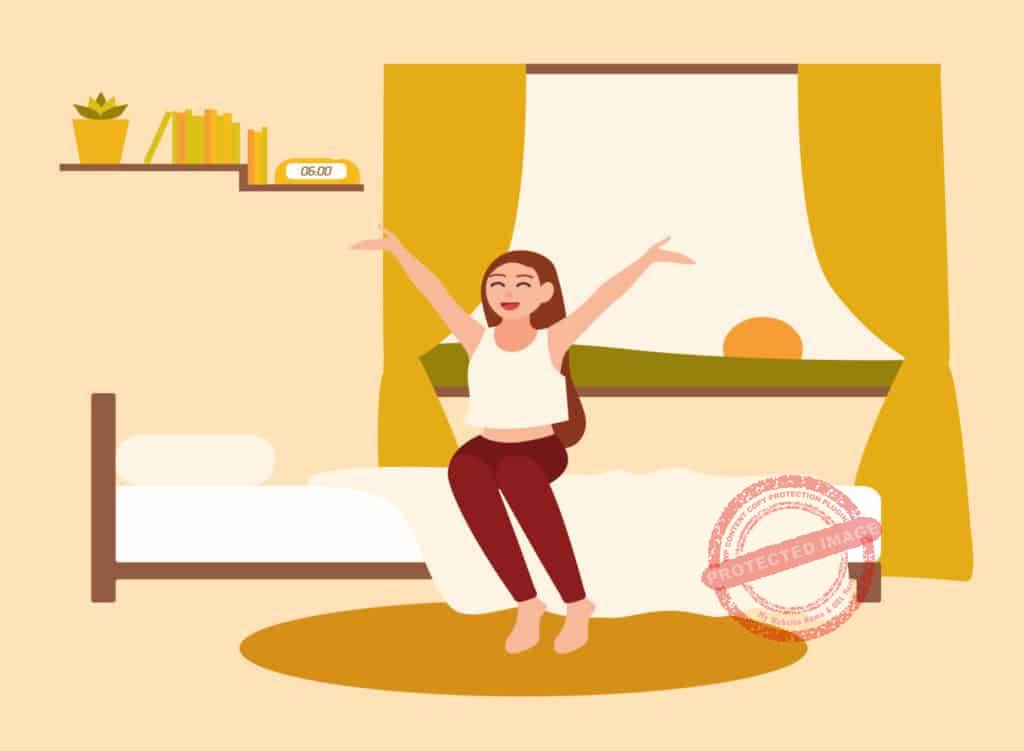
- Optimistic, agreeable, and proactive.
- Good at planning ahead and goal setting.
- Great at troubleshooting, anticipating, and fixing problems.
The biggest thing that is making early birds wake up early, is the morning routine that they created and stuck to.
Of course, the routine itself has its own benefits.
It keeps you self-disciplined and mentally tough.
So, if you want to be successful and experience the same benefits of having a good night’s sleep, waking up early, and having a morning routine, then you should start prepping on how you can establish a morning ritual yourself.
Here’s what you need to know about how to create a morning routine.
Starting A Morning Routine

Set the time when you want to start your morning routine.
Waking up and starting your routine around 5 a.m. to 7 a.m. is ideal.
But just to cover all bases, know that waking up around 7 a.m. to 10 a.m. is good if you are a student or teenager.
A little factor: For student and teenagers, performing a morning routine early is difficult and they will go nuts learning how to stick to a schedule like that.
The routine rhythm of teenagers is set to sleeping late at night and waking up late in the morning.
There are studies that support this and this phenomenon is called sleep phase delay.
Your Morning Routine Starts With Bedtime

You must make sure that you get the most out of your sleep.
The ideal amount of time you need to spend sleeping if you are an adult is 7 to 9 hours.
Not getting sufficient sleep will result in two things that can destroy your dreams of having a morning routine.
First, you will have a difficult time waking up.
Second, your mind and body will operate poorly because of lack of sleep.
If you want to be precise with how much time your body exactly needs, monitor the amount of time you spend sleeping for one week.
If you had awful sleep or you woke up lacking sleep, do not record the time that day.
Stop the monitoring until you get seven days’ worth of data.
Note that you should not use alarm clocks or change anything in your schedule during this time.
Get the average time you slept for 7 days.
This will help you know how much sleep your body needs.
Setting Alarms And The Extent

Set an alarm and sleep at the right time.
You should know how important this is.
So, say that you have decided to create a morning routine that starts at 6 a.m.
You should start establishing your morning routine by setting your alarm an hour early.
If you want to wake up at 6 a.m., set the alarm to 5 a.m.
When you wake up as your alarm rings the first time, the first thing you should do is to readjust your alarm by a minute.
For example, change the 5 a.m. alarm to 5:01 a.m.
This is to make your body and mind get used to the schedule.
In two months, the alarm will be set to the exact time you do your morning routine.
And you will become less dependent on the alarm.
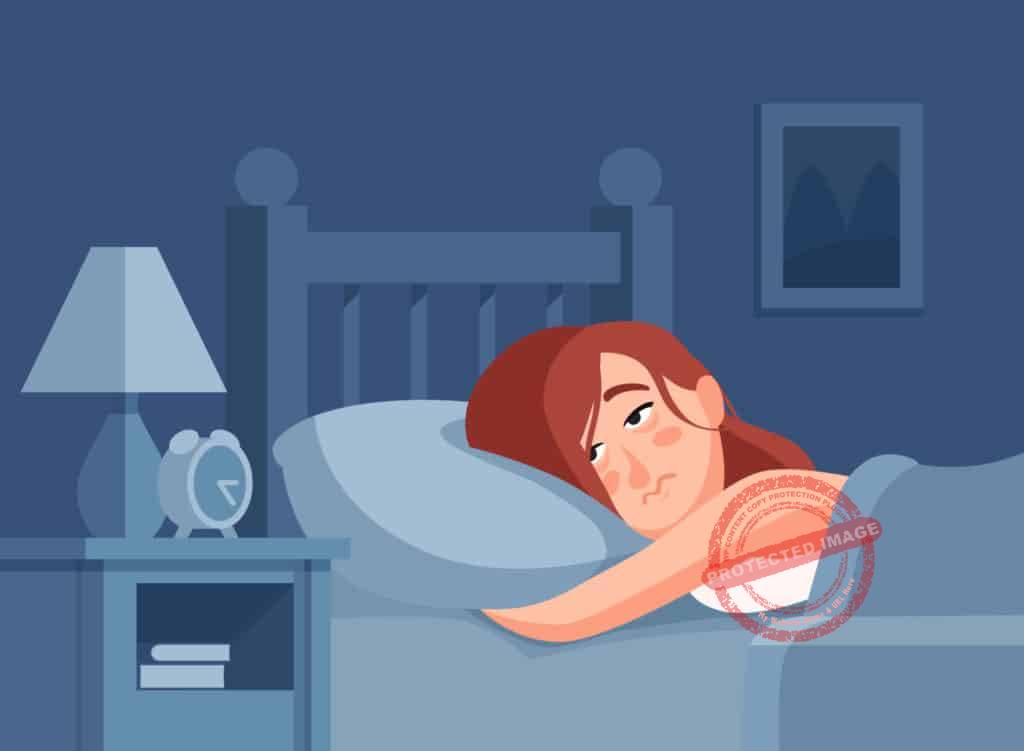
Try this method for a week.
If it does not work or you are having a difficult time waking up, perform the method in reverse.
Set an alarm one hour late.
Whenever you wake up on time (without hitting the snooze button), remove one minute from the alarm.
So, in this case, you should set the alarm to 7 a.m. first and then move it earlier by one minute, 6:59 a.m.
Sleeping And Waking Up

Sleeping and waking up on time are crucial in developing a productive morning routine.
If you have trouble sleeping, you should fix that first.
Here are some of the things you can do:
Fix Your Routine Rhythm Using Proper Lighting

Lights play an important role in your wake/sleep pattern according to neuroscientists.
Bright and bluish light means your body should be awake.
Dim and reddish light to none at all means your body should be asleep.
Why does this happen?
That is because, the production of melatonin (the hormone that induces sleepiness), decreases when blue or bright light is detected by your retina.
When you are working during the day, it is important that you get hit by sunlight or work in a bright environment.
The light will help you keep yourself awake and tells your body that you should not doze off during that time.
When evening comes and you are at home, keep your lights dim unless you want to read or perform some tasks that require precision and/or concentration. The dim light will encourage your body to become sleepy.
Also, an hour before you sleep, stop yourself from checking your phone, tablet, computer, and television since their backlights and display produce blue lights.

In addition, note that LED lights produce a lot of blue in its light spectrum.
Even if the LED lights you have are configured to give off yellowish or reddish light, it is still full of blue light.
Incandescent lights, on the other hand, offer more reddish light.
Unfortunately, they might be hard to find, phased out, or outright banned in your locality.
If you can procure one, it is advisable that you use one as your bedside lamp or as your bedroom’s light source.
If you do not want it to waste a lot of power, only turn it on an hour before you sleep.
Fluorescent lights produce blue light as well, but not as much as LED lights.
They also have high red wavelengths, so if you cannot find incandescent bulbs, then just replace your LED lights with fluorescent ones.
Change Your Pre-sleep Activities To More Relaxing Ones
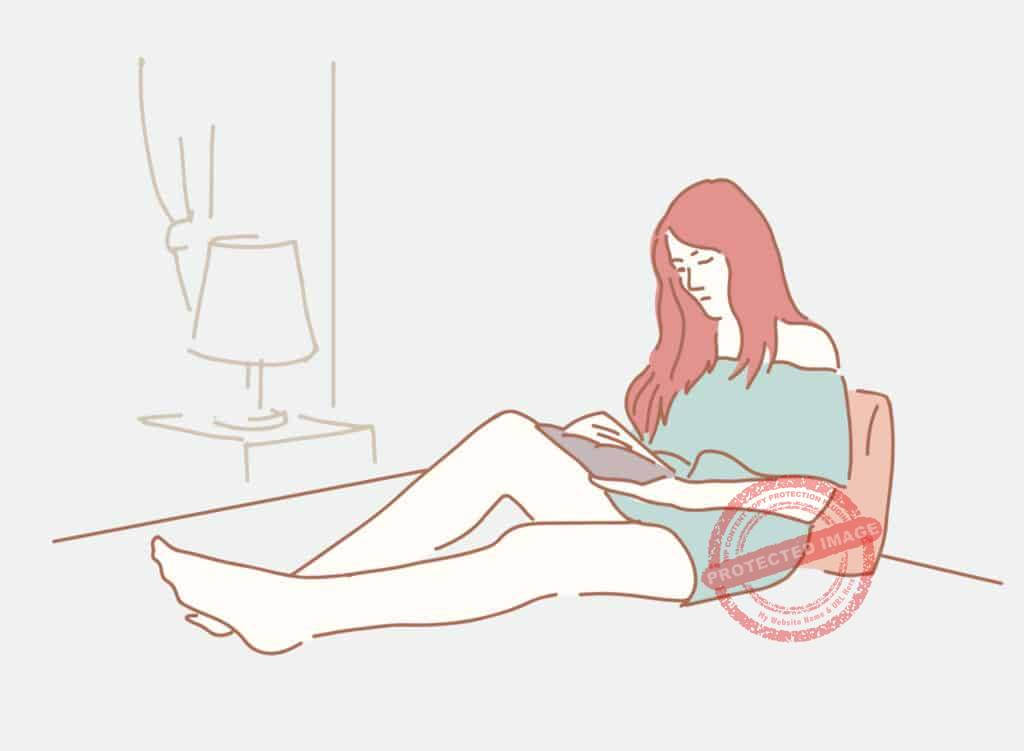
One of the best activities you can do before going to sleep is reading.
However, avoid reading materials that can be disturbing and thought-provoking.
Also, reserve your bed for only sleep and sexual intercourse.
If you want to do something but you want to do it comfortably, do it on a couch.
It is important that you only associate your bed with sleep and nothing else.
Control Your Diet And Get Rid Of Vices
Do not eat too much before you sleep. Aside from indigestion, pushing your body to digest a lot will keep it awake due to the required energy for that task. The digested food will also give you an energy spike, which will disrupt your sleep.
Alcohol, nicotine, and caffeine can make you awake and prevent you from being sleepy.
Avoid them at all cost.
Set The Right Temperature And Noise Level (If Any)
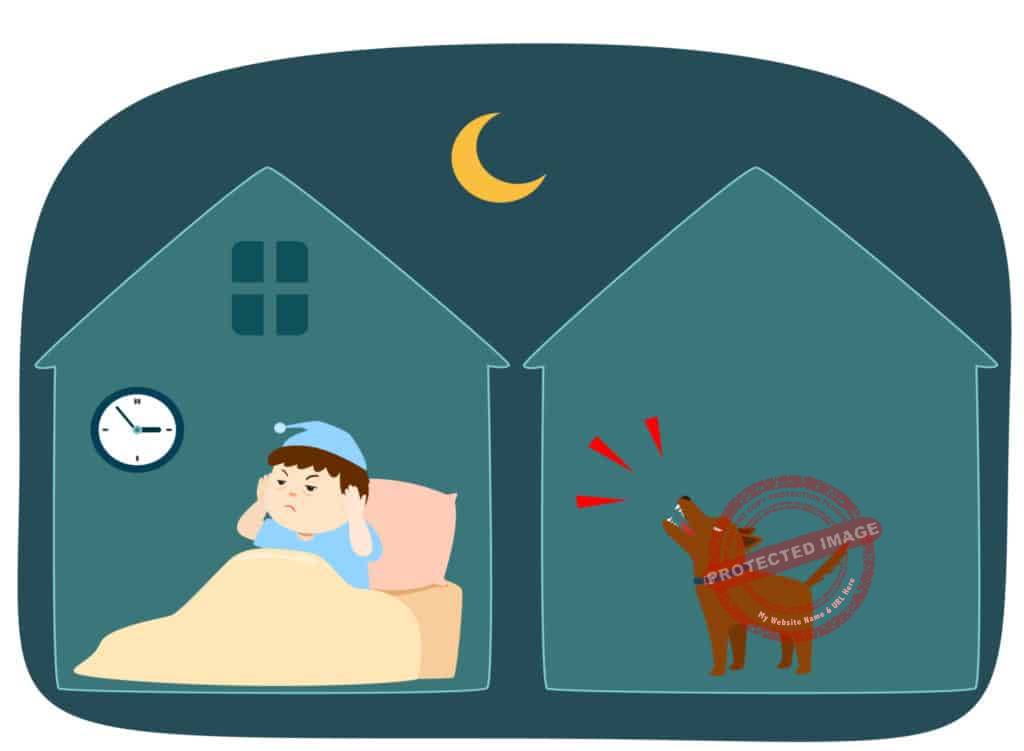
Your room should be at least 60 to 67 degrees Fahrenheit (15 to 19 degrees Celsius) to make it easy for you to sleep.
It should also be quiet.
Ambient noises like your AC or fan’s vibration are okay. But it is best that you distance yourself from them as much as possible to lower down their noise level.
Waking Up In The Middle Of Snoozing
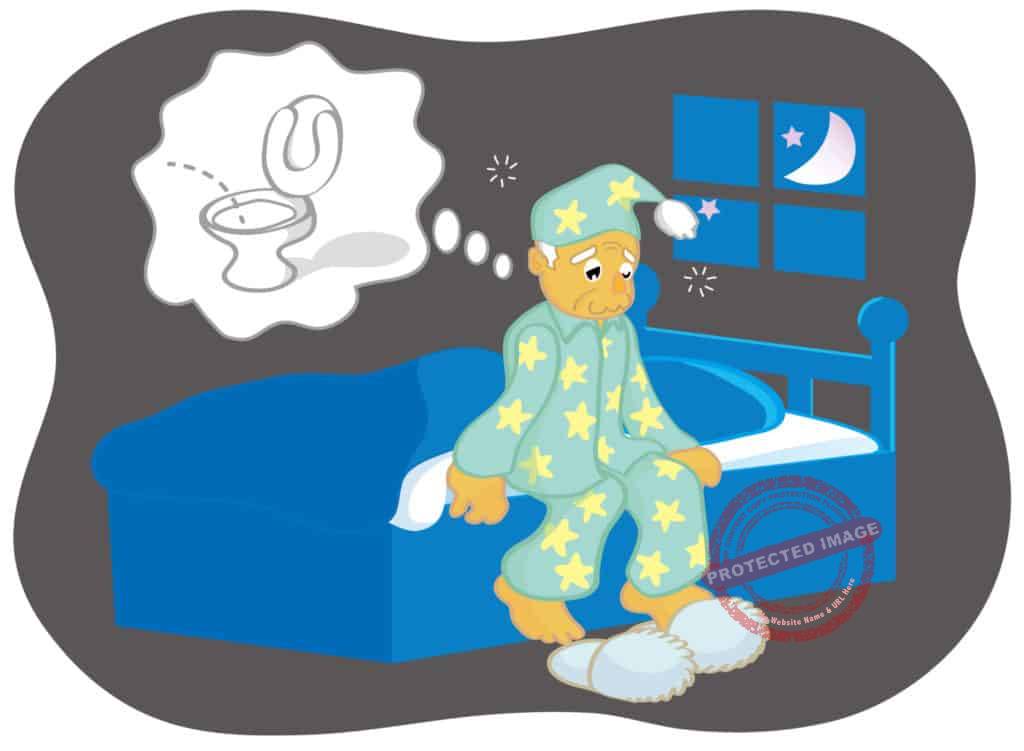
Before you panic, understand that waking up in the middle of the night is normal.
Usually, you will wake up four or five hours after you fell asleep.
When you do, do not do anything that can ‘wake up’ your body like getting upset and frustrated because you think your sleep was disturbed.
Just relax, go to the bathroom to pee, drink water, and head back to bed.
You will be asleep again in no time.
Setting Up Your Routine

Before you do anything, ensure that your sleep schedule is already okay.
This is to make sure that the morning routine you created is a productive one.
Forcibly pushing yourself to do things just because you’ve written them down in a morning routine checklist will only make you feel that they are a chore.
And you will definitely feel that way if you do them after a bad night’s sleep or if you are running out of time since you have to go to work.
Anyway, once you are ready, get a morning routine planner to make sure you do not forget about the things you need to do.
Scheduling Your Routine

Unless it’s a weekend, you will be trying to squeeze out time for your routine.
After all, work dictates how you much time you can spend for yourself.
Setting up a schedule is the next step.
What is the importance of a schedule, anyway?
Its primary purpose is for you to be reminded of what you need to do every morning.
After all, your body is not yet used to those things you need to do and your mind is still hazy upon waking.
This makes it easy to forget the things you need to do for your morning routine in the beginning.
For this part, you can use pen and paper or a schedule maker application.
First, determine the amount of time you will have between waking up and going to work.
The more time you have, the more flexible your routine will be.
The less time you have, the things you can do are limited.
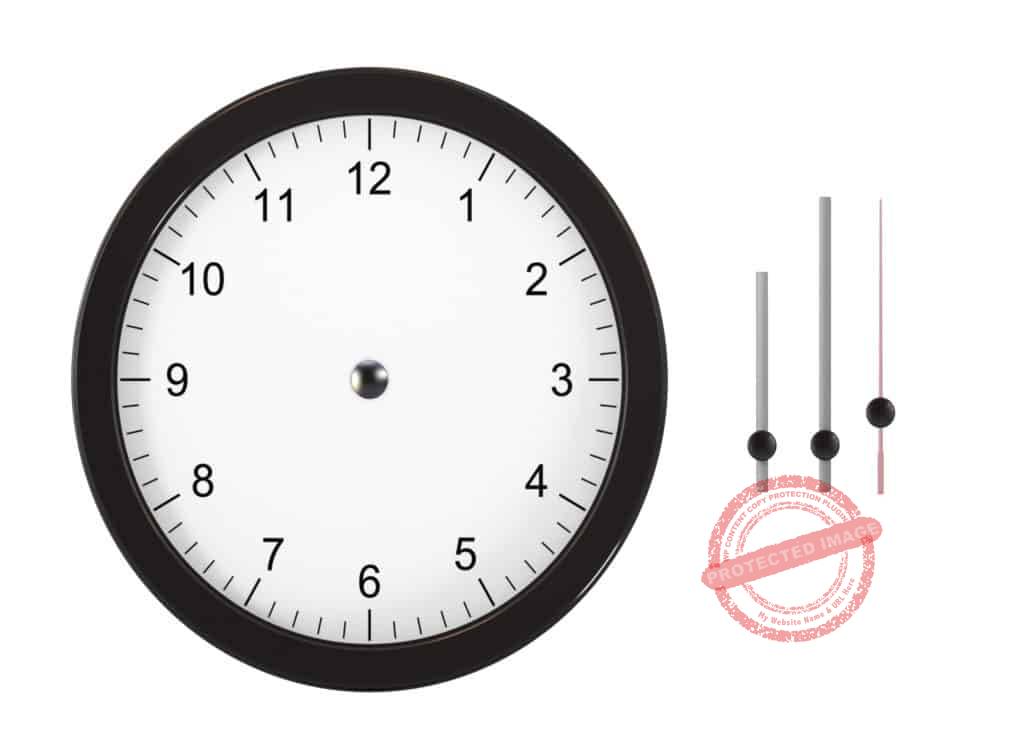
Usually, work starts at 8 a.m., so if you plan on setting up a schedule that starts at 6 a.m., you will only have one hour for your morning routine since you need to give way to your commute.
The next step is to choose the activities you want to include in your morning routine checklist and schedule.
Choosing The Activities For Your Routine

This is one of the fun parts of creating a morning routine, but make sure that you put a lot of thought into this.
Choose Short, Important, And Simple Activities
If you have a short amount of time for your morning routine, choose activities that are short, important, and simple.
For example, taking a shower is important, short, and simple.
On the other hand, checking your Facebook account might take an indefinite amount of time and not that important (unless you need to contact someone).
Choose Activities That Do Not Exhaust You Mentally

Choose activities that don’t require you to think or decide.
According to one study, a person’s capability to decide rationally wears down as they make multiple decisions in a day.
It’s called decision fatigue.
Because of that, save your ‘decision powers’ for work or business.
If the activity that you want to include for your routine requires decision-making or thinking, do it during weekends instead.
If you do not want to do it that way, you can just decide the night before.
List your decisions, and execute it the morning after.
One example is deciding on the thing you want to buy for your morning grocery run.
Think about it before you sleep.
If you do that, you will save yourself from exhausting your mental powers before you work — and even save you time.
Choose Activities That Help Your Health

Choose activities that are beneficial for your well-being.
With all the distractions and events you go through every day, you might not have been paying attention to yourself.
It is best that you take your morning routine to pamper and pay attention to your needs.
For example, instead of checking your emails to see if your boss needs something related to work, you can just go out for a jog.
If your job entails you to sit at a desk, doing some physical activity will be good for your health, not to mention productivity.
Choose Activities That Resonate With You

Choose what’s important to you and do not just imitate someone’s morning routine ideas.
For example, you might have already read articles about morning routines.
So it won’t be a surprise if one of those articles recommended that you meditate in the morning.
Sure, meditation is good. But do you need to include it in your routine just because?
Yes, do include it if you are interested in it, but don’t if you’re not.
You have limited time for the morning routine you have created, so it is best that you choose what is important and best for you.
There is no need for you to practice meditating just because someone told you it’s good.
Common Morning Routine Activity List

Here is a list of morning routine ideas (categorized) you might want to include in your schedule maker.
Again, you do not need to include all of these when creating a morning routine.
Just pick the ones that will work with you and your schedule.
| Health | Chores | Hygiene | Leisure | Others |
| Meditate | Make Bed | Shower | Drink Coffee | Listen to Radio |
| Run | Cook | Brush | Read News | Check Stocks |
| Jog | Clean | Defecate | Write in Journal | Check social media |
| Walk | Water Plants | Urinate | Converse | Grocery |
| Stretch | Groom Pets | Mani-Pedi | Do Hobby | Say Hi to Neighbor |
| Exercise | Wash Car | Shave | Check Mail | Mow Lawn |
| Eat | Laundry | Groom Hair | Review Finances | Organize Clutter |
Making Your Routine A Routine
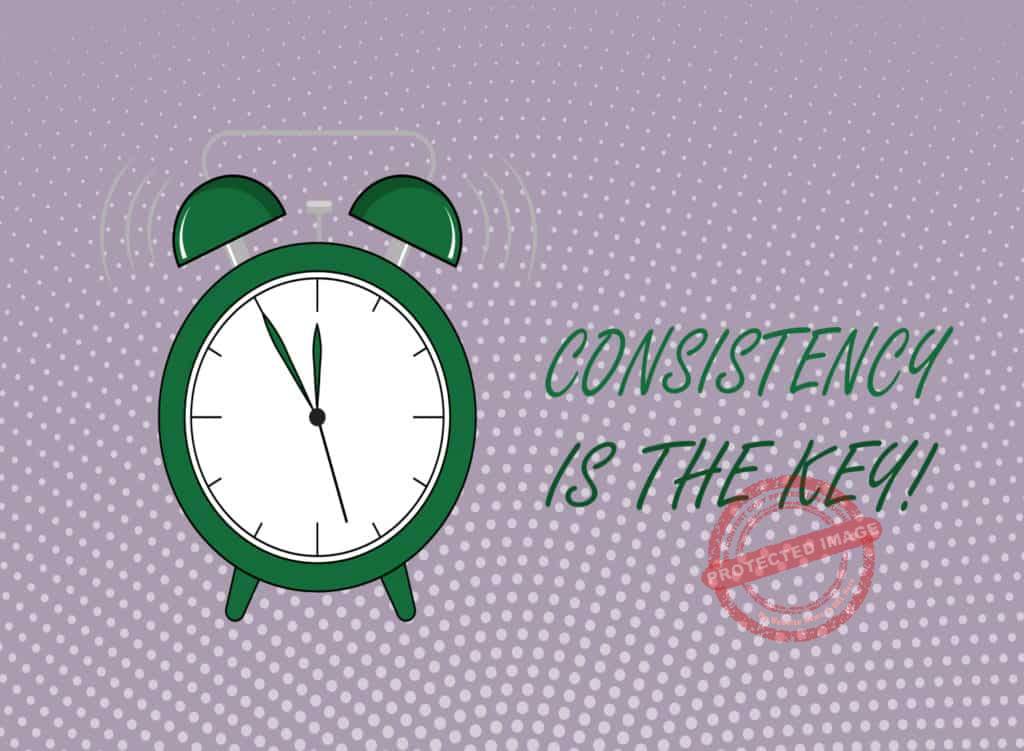
You can write down whatever you want for the routine you want to create and even use a morning routine planner to draft it.
However, a routine will never become a routine if you only do it once or twice.
You already know the importance of schedule, but that is not enough.
In addition, you will need to learn how to stick to a schedule for this to work.
Because of that, treat each activity you choose to include as a habit when creating a morning routine.
According to most self-help articles and books, you need at least 21 days to form a habit.
However, this may not be the case.

In health psychology, the study of a researcher, Phillippa Lally, recorded that it took an average of 66 days (around two months and one week) before her subjects formed a habit.
The longest time was 254 days, around eight months and two weeks.
The shortest time was 18 days.
This means that making your routine a routine is a long-term process.
You can make mistakes.
And as long as you do not give up, your routine will become a habit you cannot easily get rid of.
Now that you know how to create a morning routine and how to create a schedule for it, isn’t it about time you started mapping out your daily morning ritual?
Click on Buy Now For a PDF Version of This Blog Post
 |
